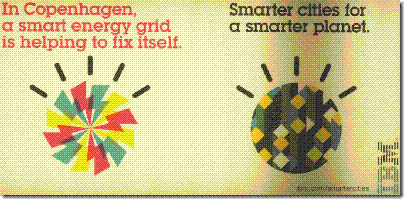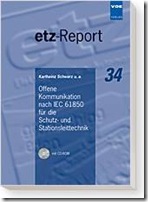Saifur Rahman has summarized in the September 2009 issue of the IEEE "power & energy" magazine what experts believe could be expected from Smart(er) Grids.
In the first paragraph he states: "The term “smart grid” is almost becoming a household name. From the U.S. president talking about the smart grid to television commercials on this topic, we have a plethora of activities around the world where engineers, policy makers, entrepreneurs, and businesses have shown a keen interest in various aspects of this technology. There are smart-grid-related funding opportunities, projects, seminars, conferences, and training programs going on in Europe, the United States, Japan, and China to name a few." There are millions of Dollars, Euro, ... waiting for "smart" managers to be spend by "smart" engineers.
Mr. Rahman's view on what is required for a Smart(er) distribution Grid is the implementation of:
- Automated Meter Reading
- Security and Privacy Issues
- Advanced Communication Infrastructure and Cybersecurity
- Ineroperability standards
- Greening of the Grid
- Business Model for Customer Level Integration
He asks, what is next? The answer is: "
I can see many nonutility players entering this smart-grid market and attempt to provide solutions. For example, many computer networking companies have plans to deliver an end-to-end, highly secure network infrastructure that helps utility customers take the most advantage of energy efficiency, demand reduction, and the integration of renewable energy sources in their homes and businesses. The end result may not be cost reduction but more value for the money spent and an environmentally friendly power grid."
Click HERE to read the view of Saifur Rahman as published in the IEEE "power & energy" magazine.
I took a photo of an interesting ad by IBM at the Berlin Tegel Airport (Germany) on 2009-09-15:

What I see allover is that ICT (information and communication technology) is meeting the power distribution world. BUT: Where are the utility (automation and protection) experts that can understand the impact of ICT on the availability and stability of the grid? There is not much automation implemented in distribution networks today. So, the ICT companies will provide smart solutions for a market that uses very little automation. Usually ICT experts know the "I" and "C" in ICT very well - but the distribution grid is mainly a huge electrical system between the already smart transmission grid and many users.
I hope that the people in charge for the distribution grids have a good understanding of the real-time electrical network! The electrical grid is quite different compared to a business dealing with bananas, orange juice or books.
Smart(er) Distribution Grids require first smart (electrical) engineers! There are smart engineers for the transmission grid ...
Click HERE for some information regarding the Lack of Power Engineers - A Risk for Smart Grids.







![clip_image002[5]](http://lh5.ggpht.com/_DgJSo-kVK_E/SqAUCgxG5DI/AAAAAAAAAF4/IlqcyBr6y4o/clip_image002%5B5%5D_thumb%5B1%5D.jpg?imgmax=800)




